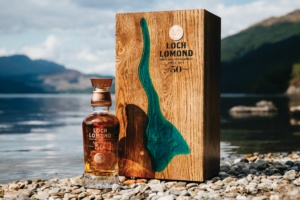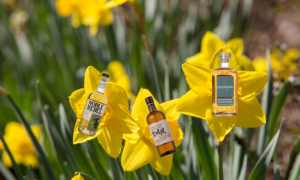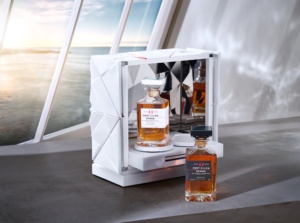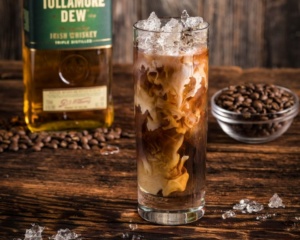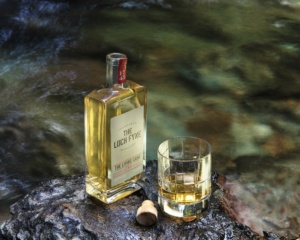Closing the curtain
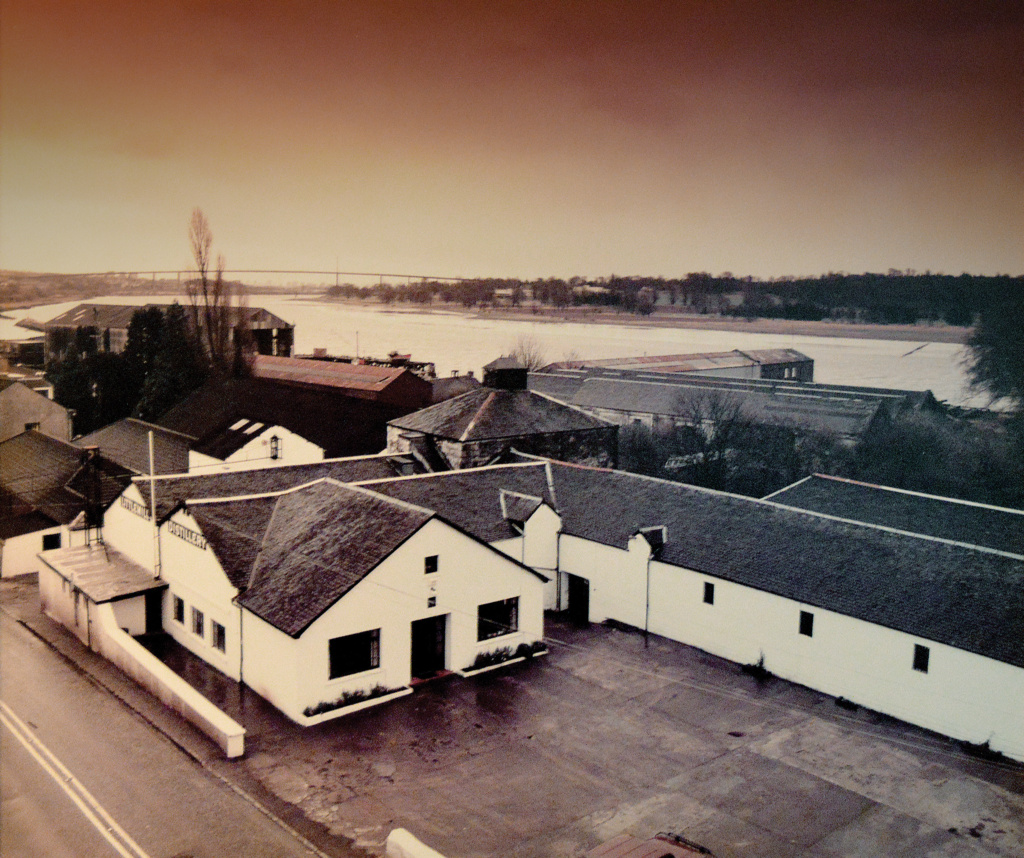
Could you tell our readers about Littlemill's fascinating history?
The real story of Littlemill distillery begins over two centuries ago. In 1750, Archibald Buchanan purchased Auchentorlie Estate, just a few miles west of Loch Lomond on the banks of the River Clyde, and with it, a brewery called Littlemill.
It is suggested there was brewing on the site since the 14th century, but the new owners had their eye on making something infinitely more complex and significantly more valuable. In 1772, the distillery was officially founded.
After one year, on 2nd November 1773 - this is when things start to get interesting - local Justice of the Peace records for Dumbarton show that 'Robert Muir of Littlemiln', an employee, was granted the first ever known licence on record by the Government of King George III to "...retail ale, beer and other excisable Liquours."
We found this out after setting a few of our archive wizards loose to have a look at records and newspapers. We discovered this a bit by surprise. We realised this was a cornerstone in the whisky industry.
In 1929, Littlemill was bought and then reopened in 1931 by American entrepreneur and chemist Duncan Thomas. Throughout this time, Littlemill was at the forefront of still innovation, boasting a unique ability to create three styles of single malts - a light and delicate traditional Littlemill Lowland whisky and two experimental malts - the heavily peated Dumbuck and a full-bodied whisky named Dunglass, after the castle nearby.
Then fast forward to the 1990s - in 1994, the distillery went silent then in 1997, it was dismantled. In 2004, a fire destroyed much of the remnants. Thankfully, by this time the last remaining precious casks were owned by Loch Lomond Distillers and stored a short distance up the road from their original home. Loch Lomond Group has had full control and custodian ship over the last casks since. I'm the last custodian if you like!
How does it feel to have this level of responsibility as the last custodian?
I've been working in beer and whisky for over 25 years now. When I left school, I studied brewing and distilling. Distilling was always something I wanted to do - I grew up near Bushmills distillery. The impact of distilling on a community, the history, and the respect that people have for distilleries is something that I grew up with.
The kind of history that's involved with Littlemill is exciting to work with when you've got a love for whisky. It comes with an expectation and a duty to look after it, as well as to respect what other people have done for it before. We need to present every release we do in the best possible condition and character and also to do that in a way that's respectful of the history that's there.
The Vanguards Collection will be launching shortly. Can you tell us the story behind the range?
Littlemill may have been Scotland's first licensed distillery, but the journey thereafter is what makes it remarkable.
Its legacy is defined by unsung heroes and quiet trailblazers pioneering at its helm. These vanguards of their time were overturning traditions in the liquid, innovating with still designs and craftsmanship, and quietly leaving their fingerprints not just on Littlemill but the wider whisky industry.
For example, it was Robert Muir who we celebrate as the distillery manager with the first license to his name, but over a century later American scientist Duncan Thomas was turning his hand to distilling, creating the patented straight neck stills that we still use at Loch Lomond Group today.
Much like Littlemill itself, these individuals passed into history before their contribution could ever be applauded, but their influence on the whisky industry endures, and it further lives on in these last precious casks that are now in my care. This four-part series is a long overdue tip of the hat to them as a cornerstone of the whisky industry.
Each release of no more than 250 bottles is dedicated to one of the Vanguards from Littlemill's history and undertaken in collaboration with an artist and kindred spirit who works with me to revive a piece of the past. It is presented in a handmade display cabinet which houses artwork from the partner as well as a handblown and cut bespoke Glencairn crystal decanter that is individually numbered. The whisky itself comes from our oldest remaining reserves, which is from the 1970s, making these remarkably well-aged releases.
How did the idea for the collection come about?
We had done some archival research on Littlemill, standing on the shoulders of Arthur Motley and Dave Broom who had independently done some great discovery work around the distillery and others of that time. It was a conversation and some digging through books with a good friend, neighbour (and friend of the brand), Charles MacLean, that really started to build the picture of the legacy and Littlemill's place in the world of whisky. When you start to piece it all together, there is this remarkable story to tell, and some remarkable individuals that only the most well-researched and knowledgeable whisky collectors and enthusiasts might be aware of, so we felt it was the right time to shine a spotlight on them.
The Vanguards Collection is about identifying these unsung heroes. Most of them did their job, had their time at Littlemill, and left without applause. This has really been the opportunity to put them in the spotlight and celebrate them with these special releases and artistic collaborations.
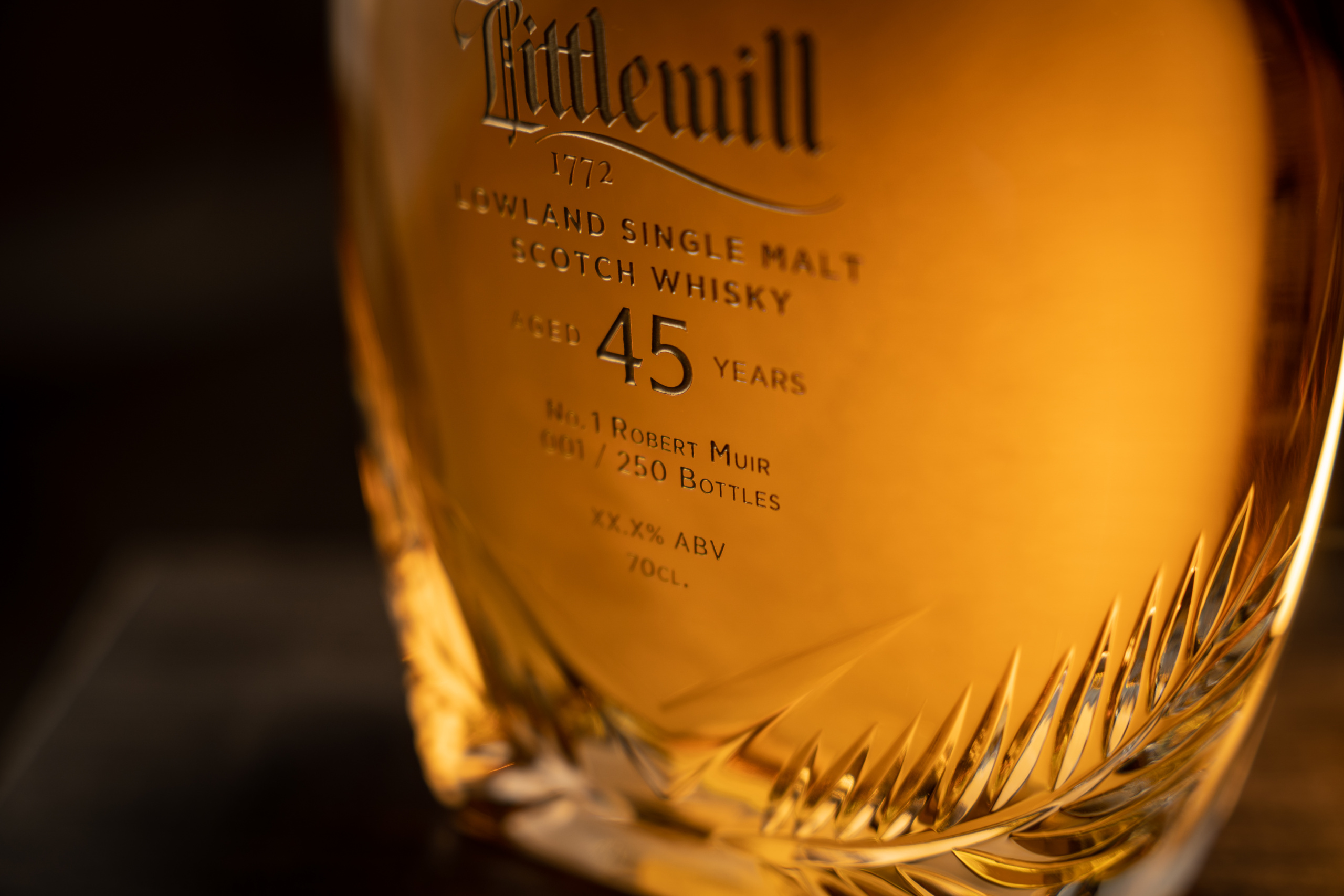
The first expression is focused on Robert Muir. Tell us more about him.
Very little is known of him, except that the owners of Littlemill felt that he was important enough and were confident enough in him to put his name on the licence. What he stands for, however, is remarkable.
You're working in partnership with a craftsman on each release. Who did you work with on this initial release?
My aim has been to preserve the past through these last casks and ensure that they are the very best reflection of the Littlemill style. What was also apparent is the crossover between what my work requires and what an artist requires are astonishingly similar - patience, passion, and a deep respect and understanding of the craft.
Each release partners with an artist and kindred spirit, also working to revive the past through their art, the way I do with the last precious casks. The craft has close parallels with the Vanguard in question, and what they produce will be one-of-a-kind to Littlemill. It feels like a lovely way for two worlds to meet and give a lovely last homage to the Vanguards.
For this first release, we're delighted to be partnering with London-based artist, Vic Lee. Vic's use of the written word in his art, and his ability to transform calligraphy into something breathtaking both in design and scale just felt like the perfect homage to those all-important words in Robert Muir's license that would come to pave the way for more to come.
Vic's art is the perfect example of where the past meets the present to create something exceptional. And having been lucky enough to be part of Vic's work for the first release, exceptional is the right word.
Vic is producing 250 unique one-of-a-kind pieces of art that will be placed into each Vanguard's cabinet. There is a portal in the cabinet door of each one - a rare window into the history of Littlemill if you will - that displays this amazing work.
How would you describe the liquid?
It was laid to rest in 1977 in refill American oak. In the mid-1990s, it was vatted and recasked into the same wood. Then, in 2017, it was moved to a first-fill Oloroso hogshead to finish. Oloroso works really well with Littlemill. It really complements the distillery style that Littlemill has.
The liquid has been double distilled, however, because of the design of the still, it has a very much triple distilled character. It's the traditional delicate, fruity, floral Lowland style that fits the distillery character. The refill wood of the American oak cask has had low influence over the spirit, so it really retains the distillery character.
Although it was laid down in 1977, because it has been matured in refill wood, it's had a very low influence over the spirit. So even though it's a 45-year-old, it still retains its distillery character as the wood hasn't overbalanced it.
On the nose, there is elderflower, pineapple, and sharp, fresh citrus notes alongside roasted hazelnuts, cinnamon, and nutmeg. The palate has a silk-like mouthfeel with melted brown sugar, creme brulee, crisp apple, ripe pear, lime juice, sultana, and citrus peel - very mouthwatering! The finish is long with grilled grapefruit and sweet caramelised sugars balanced with sharp citrus. For a whisky that is 45 years old to have that freshness and vibrancy, I think is what makes Littlemill stand out.
For this release, we've kept that distillery character at the front and centre and have used the historical cask influence. Oloroso is a historic cask for distilling in Scotland, with sherry coming through in the late 1700s and early 1800s. The distillers would have access to those freshly emptied sherry casks though they didn't put all their whisky into first fill casks. Distillers would have reused the cask four or five times which meant that there was never a big sherry influence on the whisky. We've tried to be respectful of that, so this release has only been matured for five years in the sherry. The oloroso is just complementing the distillery character that is already there.
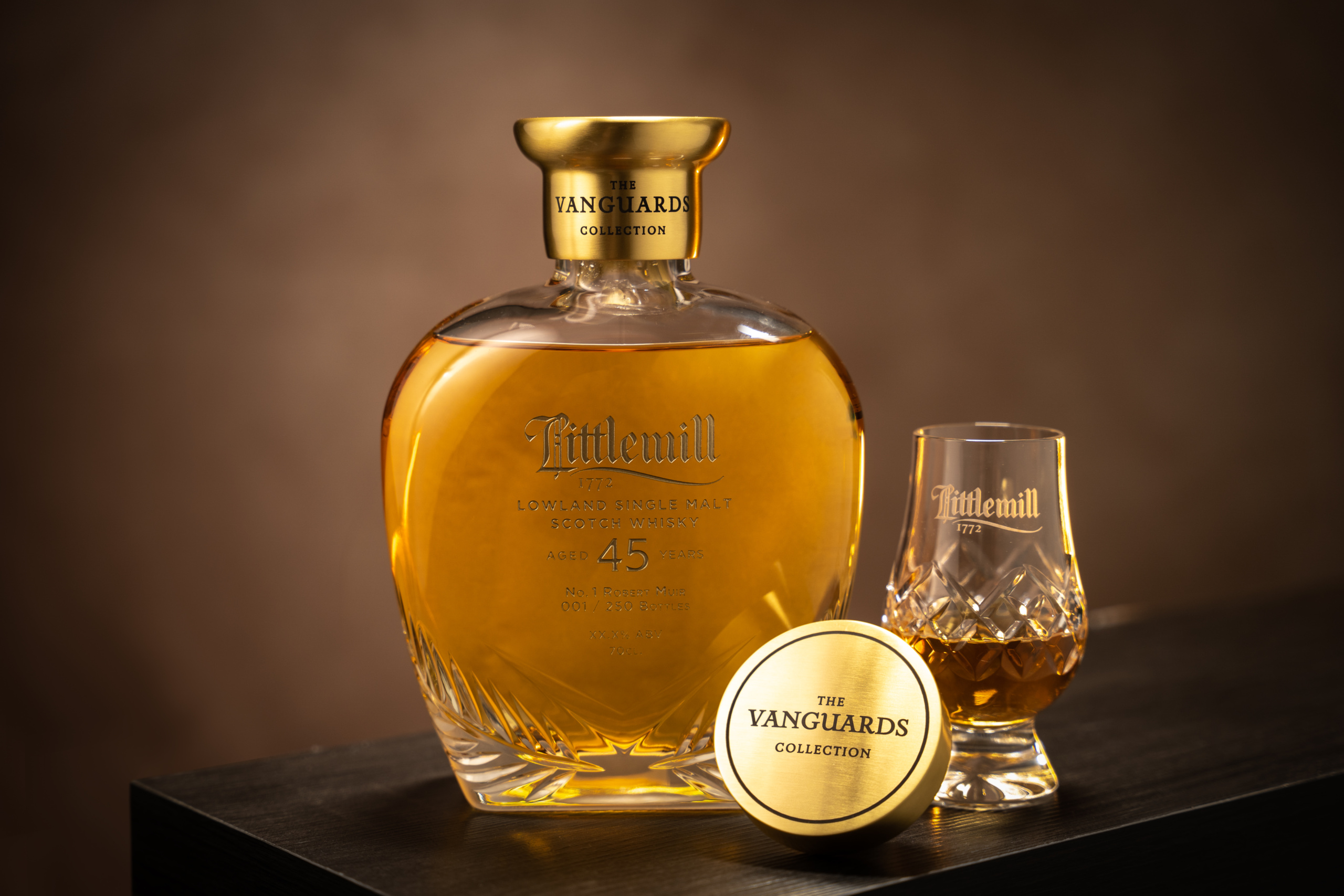
How did you decide that this was the whisky to assign to Robert Muir?
Because Robert Muir was the first in the Vanguards Collection, we wanted to go with the classical Littlemill character. That's why Oloroso felt like the natural fit for that.
When we're presenting Littlemill, we want to respect the philosophy that went into the spirit at the time it was distilled. The casks are very much secondary to how the spirit itself is made.
What do you see for the future of Littlemill?
The lamentable but also wonderful thing about Littlemill is we really are talking about a limited number of previous remaining casks and thus releases. There is a very real time limit on what remains - unlike other mothballed or silent distilleries, which are now being resurrected, Littlemill is very much never coming back. The distillery is burnt down and gone - we couldn't bring it back if we wanted to. What remains is these releases and me as the last custodian to determine how and when we release them. We are in the final chapter of Scotland's oldest licensed distillery. What a remarkable legacy to get to be a part of though!
I imagine it must be quite emotional to play such a pivotal role in a distillery's final chapter. How do you feel about the end drawing closer?
Whisky is a consumable product and the best way to appreciate it is by drinking and tasting it. Doing the releases that we're doing is the best way of honouring the legacy of the people who have been involved with Littlemill. There's a romanticism and historical aspect to whisky, though the people who are involved at the time aren't thinking about the history and tradition. They're making whisky to be sold and enjoyed. When you bring it back to its core, whisky is about making something that is drunk and shared.
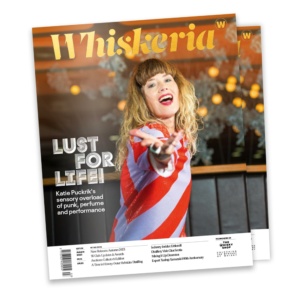
The original feature is from the Autumn 2023 edition of Whiskeria, delivered to the door of W Club subscribers and also free with any Whisky Shop purchase in-store or online.
 4.7/5 with 10,000+ reviews
4.7/5 with 10,000+ reviews

